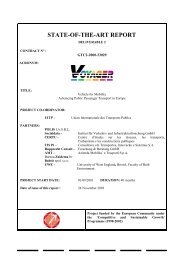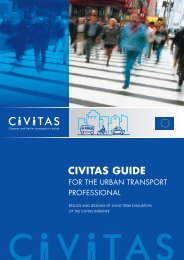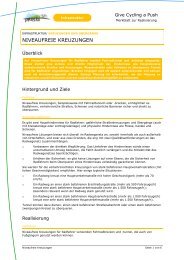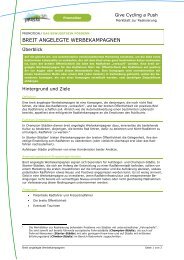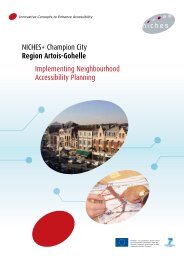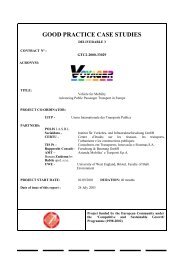Evaluation of Integrated Coastal Zone Management (ICZM) in ...
Evaluation of Integrated Coastal Zone Management (ICZM) in ...
Evaluation of Integrated Coastal Zone Management (ICZM) in ...
You also want an ePaper? Increase the reach of your titles
YUMPU automatically turns print PDFs into web optimized ePapers that Google loves.
<strong>Evaluation</strong> <strong>of</strong> <strong>Integrated</strong> <strong>Coastal</strong> <strong>Zone</strong> <strong>Management</strong> (<strong>ICZM</strong>) <strong>in</strong> Europe – F<strong>in</strong>al Report<br />
The <strong>Evaluation</strong> Team<br />
Throughout the evaluation process a team <strong>of</strong> evaluators cover<strong>in</strong>g all<br />
coastal European countries was <strong>in</strong>volved <strong>in</strong> assembl<strong>in</strong>g the <strong>in</strong>formation.<br />
Team members were split <strong>in</strong>to core and extended team members.<br />
Extended Team members were work<strong>in</strong>g on <strong>in</strong>formation collection<br />
assigned to specific countries and were develop<strong>in</strong>g the “country<br />
cases”. The core team members guided the process (e.g. by provid<strong>in</strong>g<br />
assessment formats), analysed, made comparison between<br />
countries and constantly updated and consolidated the <strong>in</strong>formation.<br />
Collect<strong>in</strong>g and process<strong>in</strong>g secondary <strong>in</strong>formation<br />
To make sure that by the end <strong>of</strong> the evaluation a standard and<br />
m<strong>in</strong>imum set <strong>of</strong> <strong>in</strong>formation would be available for each coastal<br />
country (“the country case”), a common format (assessment grid, see<br />
Annex B) was developed which presents the essential features <strong>of</strong> the<br />
development and implementation <strong>of</strong> the <strong>ICZM</strong> strategy (or alternative<br />
policy approaches). The ma<strong>in</strong> source materials for this exercise were<br />
the Member States reports that were expected to be issued around<br />
February 2006. In case <strong>of</strong> absence <strong>of</strong> (f<strong>in</strong>al) reports <strong>in</strong>formal drafts<br />
and proxy-material was analyzed either derived from on-l<strong>in</strong>e research<br />
or other sources.<br />
A wide variation between countries as to whether they have developed,<br />
or had still been on the way <strong>of</strong> elaborat<strong>in</strong>g a national <strong>ICZM</strong><br />
strategy was observed. Therefore, an explorative <strong>in</strong>vestigation <strong>of</strong> the<br />
documents at hand was undertaken.<br />
The assessment grid (see Annex B) conta<strong>in</strong>s the country case. It<br />
was made available to and completed by the respective country<br />
evaluator. The grid starts with the summary <strong>of</strong> the country analysis<br />
<strong>in</strong>clud<strong>in</strong>g major f<strong>in</strong>d<strong>in</strong>gs (Section 1). This is followed by prelim<strong>in</strong>ary<br />
<strong>in</strong>formation on the ma<strong>in</strong> country's <strong>in</strong>stitution driv<strong>in</strong>g the <strong>ICZM</strong> process<br />
(Section 2).<br />
The descriptive parts <strong>of</strong> the grid (Sections 3 and 4) follow <strong>in</strong> their<br />
structure as much as possible the outl<strong>in</strong>e <strong>of</strong> Chapter III, National<br />
stocktak<strong>in</strong>g and Chapter IV, National strategies <strong>of</strong> the Recommendation<br />
<strong>of</strong> the EU on <strong>ICZM</strong> <strong>in</strong> Europe. The ma<strong>in</strong> elements <strong>of</strong> the process<br />
followed by each country to arrive at a national strategy were also<br />
described. The process was regarded as important as the f<strong>in</strong>al output<br />
<strong>of</strong> this process, i.e. the national strategy, and therefore a high degree<br />
<strong>of</strong> elaboration was allocated.<br />
The assessment part (Section 5) analyses the comprehensiveness<br />
and quality aspects <strong>of</strong> the national strategy and the process that led<br />
to it. Here the eight Pr<strong>in</strong>ciples <strong>of</strong> the Recommendation <strong>of</strong> the EU on<br />
<strong>ICZM</strong> <strong>in</strong> Europe guide the evaluators to arrive at a balanced and fair<br />
judgement.<br />
The recommendation part (Section 6) draws conclusions on pitfalls<br />
and lessons learned. Here the evaluators were asked to <strong>in</strong>clude<br />
suggestions and recommendations for enhanc<strong>in</strong>g the <strong>ICZM</strong> process<br />
<strong>in</strong> the countries.<br />
Based on the country assessments, the core evaluators prepared<br />
cross country assessments for each <strong>of</strong> the Regional Seas. Here<br />
suggestions for the specific case <strong>of</strong> the countries were analysed on<br />
Core<br />
and extended<br />
evaluation team<br />
members<br />
Develop<strong>in</strong>g<br />
country cases<br />
and cluster<strong>in</strong>g for<br />
comparisons<br />
across countries<br />
All country<br />
evaluators follow<br />
common<br />
assessment grid<br />
Cross country<br />
assessments<br />
18 August 2006 64



